Takao in 1:350
Ever since I saw this picture http://en.wikipedia.org/wiki/File:IJN_cruiser_Takao_on_trial_run_in_1932.jpg
in that thick book about warships that I borrowed from the Stockholm public library over and over as a kid, I've wanted to build the Takao. She was the meanest and koolest looking ship I had ever seen.
So when I saw Aoshimas kit in 1:350 I didn't hesitate a second before I bought it.
The japanese heavy cruisers were very powerful and yet fragile ships. In order to comply with the Washington treaty they had an official displacement of 10 000 tons. In reality it was considerably higher.
Since the japanese realised, that they would always be inferior in numbers to the US Navy, their strategy was to build each ship stronger than its corresponding US ship.
Ship design is all about compromise. In order to squeeze in as much armament, armour and speed as possible into their designs, the japanese sacrificed all other important qualities in their cruisers.
This led to problems with stability, hull deformations when going through rough seas and very cramped conditions for their crews. In Takaos case, this led to her being fitted with bulges and having her upperworks cut down, in order to increase stability, whereby her displacement increased even further.
On the other hand the japanese cruisers had a terrific punch, which they delivered with fearful precision during the first years of the Pacific War. In the battles of the Java sea and Savo Sound they showed the allied navies how night fighting at sea was to be done.
Their strongest weapon, but also their achilles heel, was their 61 cm ‘‘Long Lance'' torpedoes. They were the best torpedoes of the war, but they also made the cruisers very vulnerable to air attack. Several of the heavy cruisers were sunk when their torpedoes exploded after they were hit by bombs. Some narrowly survived air attacks only because their captains ordered the torpedoes shot away just before they were attacked by US planes.
Of the 18 heavy cruisers Japan built, only two survived the war. Takao was one of them. In August 1945 she lay damaged in Singapore, serving as a floating AA-Battery.
Aoshimas kit is very good, but it has some weaknesses. As usual I started the build by strengthening the hull with some lengthwise bulkheads. I scratchbuilt the masts, since the kits ones didn't look too good, but also because plastic masts bend, when subjected to the tension of the rigging lines.
I used GMMs PE set which was simply excellent. The kits 12 cm guns were clumsy affairs, so I replaced them with resin ones from Veteran Models. They, on the other hand, were pretty hard to build.
Ships boats are a sad chapter with most manufacturers, and so was the case here too. Instead I used Hasegawas set of boats for japanese ships, but they too left something to be wished for. Their cutters are moulded in one piece, with thwarts looking like big boxes and no floorboards. I cut the thwarts away, thinned down the gunwales and added floorboards and thwarts from 0,25 mm plastic strip.
Why can't the manufacturers make the cutters in two pieces. A lower part with the hull, and ideally with engraved frames and floorboards, and an upper part with the gunwales and the thwarts. ICM did this on their König sometime in the late nineties.
As reference when building I used Janusz Skulski's ‘‘Anatomy of a ship. The heavy cruiser Takao''. Reference literature doesn't get much better than this.
Rigging the biplanes with stretched sprue was not very difficult, but absolutely necessary. When exhibiting a ship model at IPMS-Stockholms monthly club meeting, none of the aircraft builders, who constitute the majority of those present, will see the ship. They only look at its airplanes. Then they say: ‘‘ Nice ship model.'' 😉
I finished the model on the 7. of October 2009 at 0120 hrs.
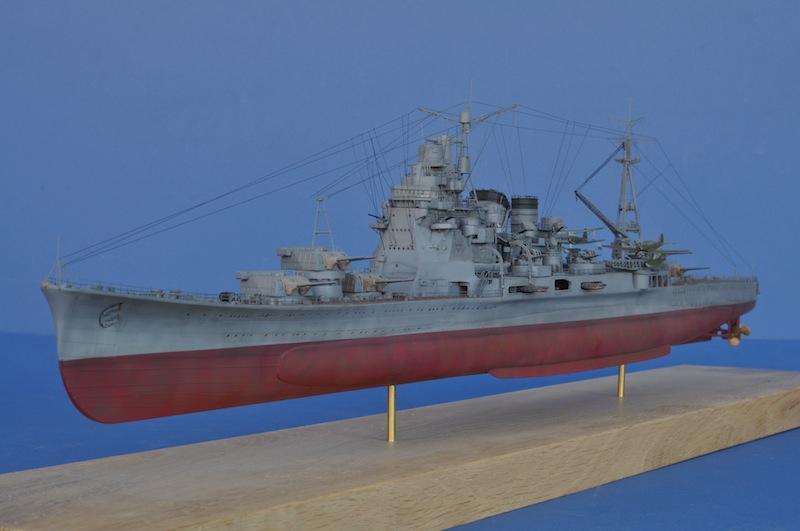
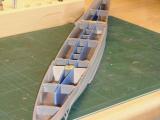
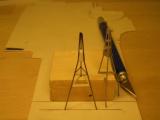


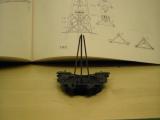

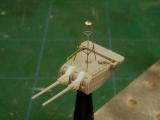
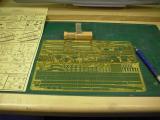
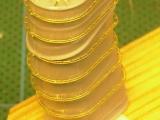
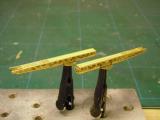
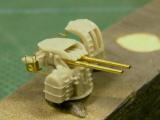
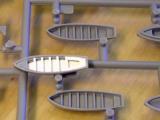
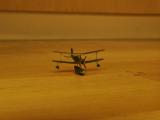

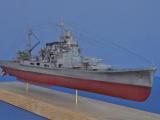
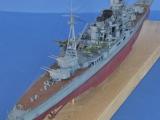
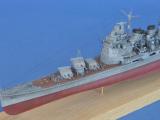
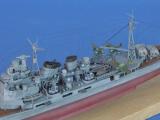
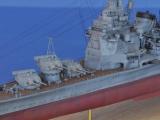
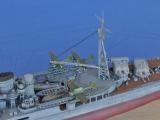
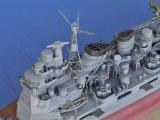
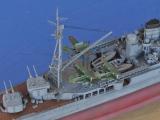

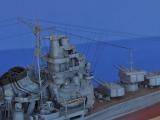
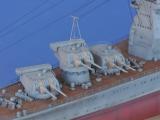
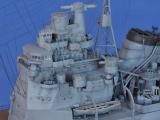
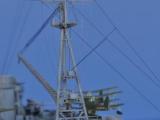
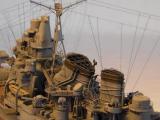
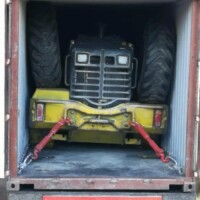
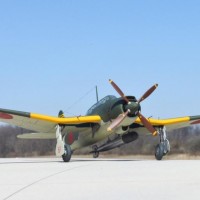

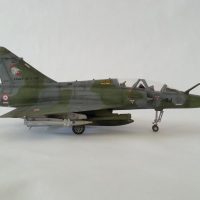
Great idea to put them here Ulf ! Its awesome as the Yahagi, i like this class of heavy cruisers too, they look massive with their big superstructures.
The japanese Navy ships are impressive constructions. These big ships in 1/350 are way above my budged with all the needed extra stuff but i do ships as well, your postings are very tempting to finish my 1/350 Hood.
Got very thin Rz-line ordered.
It would be very nice, if you post more of your work here
Cheers
Bernd
Superb, Ulf. I really enjoy these projects.
The few ship models I've done don't compare AT ALL with your work. Me and PE don't play well together for one thing. You must have a lot of patience (and time) to complete these outstanding examples. I'm impressed.
After reading your write-up, I did the exact same thing as the aircraft modelers you mention. My very first comment was going to be - wow, you rigged a tiny biplane. Not, wow you made a great ship! But you did make an excellent ship, and I enjoyed reading your write-up. Not being a ship guy, I certainly learned a lot. Great model. and that rigging on the Pete is pretty cool too :).
Awesome Ulf. Amazing! What about Yamato next 😉
Beautiful work and an incredible model. I am particularly impressed with what you did with the "Pete" floatplanes, since I do not rig 1/350 biplanes. And I really really like your weathering and painting techniques.
Takao illustrates one of the major shortcomings of Japanese naval strategy: she carries three floatplanes, as did most cruisers, which were the Japanese aerial scouting force. Japan never developed the scout bomber, which had the range to search for the enemy and the ability to put one into the flight deck once found - the Japanese hadn't quite learned from their interwar naval exercises what the USN had learned: the side that disables the enemy's carrier first will win. This was shown most at Midway, where the Japanese scouts found the US carriers, but couldn't do anything about it, at a time when any intervention would have been critical. Takao herself ended up as that "floating AA position" in Singapore after USS Dace blew her stern off in the Palawan Passage the morning of October 24, 1944, the first indignity Admiral Kurita would suffer that day.
Another great build there Ulf, great patience shown with all that small stuff.
Well done mate.
Thank you all!
Sorry Morne. No Yamato from me for a while. I' have been thinking of building her though, but in her 1942 state, before the wicked USNAF started to attack ships with airplanes, forcing the japanese to add all those ugly AA-guns. Very unbecoming to her they were, and very unsportsmanlike of the USNAF;-)
I share your enthusiasm about this ship, Ulf. It is a beauty in deed.
I'd love to see some close ups and high resolution shots. Any place in the web where one could look?
There you are Halvar.
I've put up four more closeups of her.
Thx, Ulf. Loving it!
Another tremendous ship build Ulf. Interesting & accurate comment about your fellow builders. Have you done any water level ships in action?
I used to build 1:700 ships as waterline models with water sculpted around them. I got quite favourable comments on my water too, but I was never convinced by water dioramas; not my own, nor anyone else's I have spent too much time in a kayak, physically experiencing waves, to be convinced by water dioramas.
The IJN's Heavy Cruisers were indeed beautiful ships, made more so by your superb skills Ulf.
I surely hope you have a Battleship to show us.
Yes, I have a few battleships and I will post articles about them.
Amazing work Ulf, as before I'm blown away by the detail here!
Superb work Ulf
Nice clean model. What did you use to rig the radio antennas?
I used fly tying lines. They are thinner than ordinary fishing lines.
I dye them black with a permanent ink marking pen before applying them.